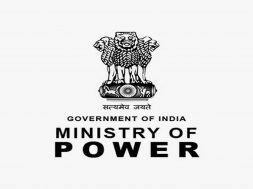
Record-breaking heat is sweeping across much of South Asia and Southeast Asia. With temperatures rising well above 40 degrees Celsius in many countries, demand for electricity is surging as people turn to air-conditioning to stave off the crippling heat.
The sweltering situation is stressing power grids making power shortages more likely, and increasing demand for fossil fueled power generation which exacerbates climate change.
With extreme weather conditions like heatwaves becoming more frequent and intense due to climate change, the continent needs innovative solutions to meet its people’s energy needs while reducing greenhouse gas emissions.
ADB’s Energy Sector Group Chief Priyantha Wijayatunga discusses Asia and the Pacific’s growing energy needs and the clean and efficient energy solutions that can help meet them.
How big is the demand for electricity in Asia and the Pacific?
There has been rapid progress on energy access across developing Asia and Pacific with an overall electrification rate of 95% as of 2020.
Yet, about 940 million people experience frequent power interruptions, about 350 million lack access to adequate electricity, and another 133 million have no electricity whatsoever. The recent energy crisis and COVID-19 pandemic have exacerbated energy access for poorer, more vulnerable people.
Over the next three years, more than 70% of the growth in global electricity demand will come from the People’s Republic of China, India, and Southeast Asia, according to the International Energy Agency (IEA). By 2025, for the first time, Asia will account for half of the world’s electricity consumption.
The challenge is how to meet that electricity demand sustainably. Last year, about 57% of the region’s electricity was generated by coal while 32% was from low-carbon sources like nuclear and renewables.
How can the region meet its growing demand for electricity without generating even more carbon emissions?
This heavy dependence on coal contributes to Asia and the Pacific having among the highest regional carbon dioxide intensity for electricity generation: about 590 grams of CO2 per kilowatt hour (kWh), versus the global average of 460 grams of CO2 per kWh, according to the IEA.
The region will need to invest trillions of dollars in a range of technologies including energy efficiency, renewable generation, and storage. Countries must decouple economic growth from energy consumption and leapfrog to efficient, low-carbon technologies to avoid being locked into fossil-based systems. We must also focus on decarbonizing end-user sectors such as industry and transport, which will drive demand for clean energy.
And we must accelerate the decommissioning of coal plants. Last November, ADB signed a memorandum of understanding with the Government of Indonesia and other key partners to explore the early retirement of the first coal-fired power plant under our Energy Transition Mechanism (ETM). Pre-feasibility studies are also underway in Pakistan and Kazakhstan.
Renewable energy can be notoriously intermittent. How much solar and wind can be integrated into grids today?
The common perception has been that intermittent renewable energy capacity of only about 10% of total generation capacity can be accommodated into power systems without any operational issues. In fact, the figure is more like 70-80% – with the right investments and resources.
Today, countries can run for several days with only a combination of renewable energy sources, provided it includes conventional clean energy baseload systems such as hydropower. In some cases, connections to neighboring countries with excess nuclear and renewable energy will help.
This requires countries to strengthen their electricity transmission systems to absorb more intermittent renewable energy and reduce the risk of curtailment from capacity-constrained transmission grids. That’s where energy efficiency, energy storage, and demand-side measures such as installing smart grids and meters are key – during peak load periods and to even out daily and seasonal fluctuations of renewable energy production.
Which innovations or emerging technologies can move the needle in the transition to net zero while fulfilling energy demand?
According to the IEA, under a net-zero scenario, by 2030, most CO2 emission reductions will come from technologies already on the market today. Yet in 2050, almost half the CO2 reductions will need to come from technologies that are still in the prototype phase.
We will need hundreds of innovations and emerging technologies to come to market. These include heat pumps, green hydrogen, carbon capture utilization and storage, smart grids, offshore wind, energy storage, and electric vehicles, to name a few. This will require several billions of dollars of investment in research and development in the next 10-20 years.
Take green hydrogen, for example. Produced from renewable energy sources, this fuel remains quite expensive today for developing countries, but it is increasingly being considered. India, for example, is exploring using green hydrogen for long-duration storage of renewable energy and to replace fossil fuels in industry, as part of its net-zero by 2070 pathway.
As worldwide demand for green hydrogen increases, this will drive down investment costs. In one or two decades, it could be like what solar is today for power generation – the cheapest carrier to transport energy.
What should governments do to enable more investments in clean energy technologies?
Governments’ main responsibility is to create an enabling environment. They need to put in place the policy and regulatory frameworks that make it easier and more profitable to invest in energy efficiency and renewable energy. These include mandatory regulations, incentives, capacity building, information dissemination and awareness raising.
Countries also need to look closely at removing inefficient fossil fuel subsidies. This, together with setting up carbon pricing mechanisms, will encourage more investments in low carbon technologies. In parallel, they’ll need to continue improving electricity transmission and distribution infrastructure, including using advanced digital technology to support more variable renewable energy.
We look forward to supporting governments and the private sector in this work. ADB’s energy policy adopts a common but differentiated approach in line with each developing member’s level of economic development, resource endowment, respective capabilities, and nationally determined low-carbon transition pathway.








